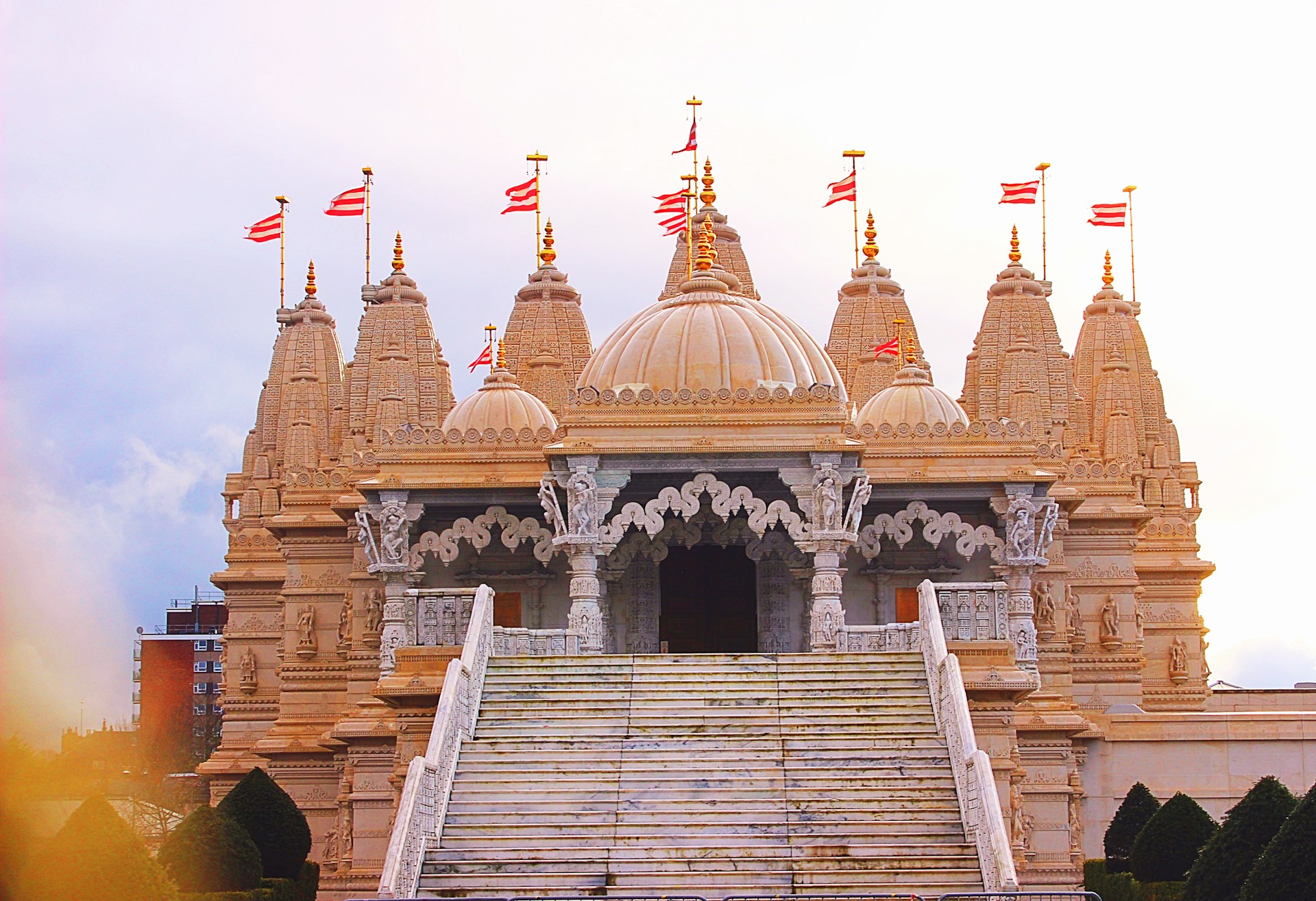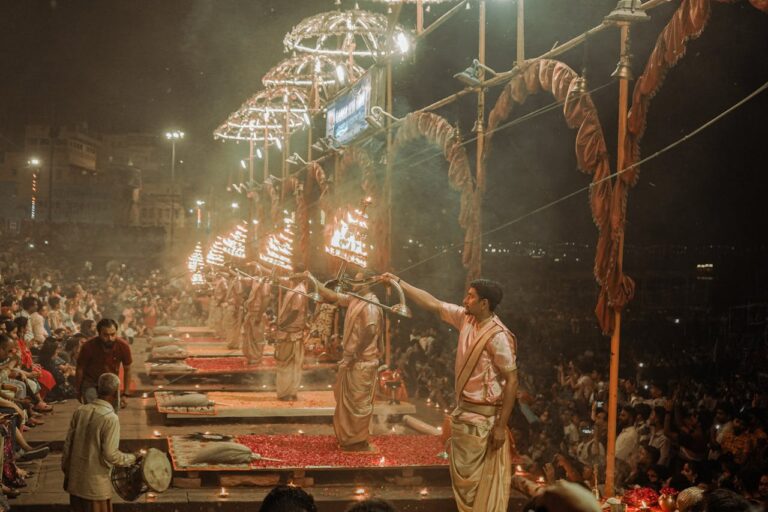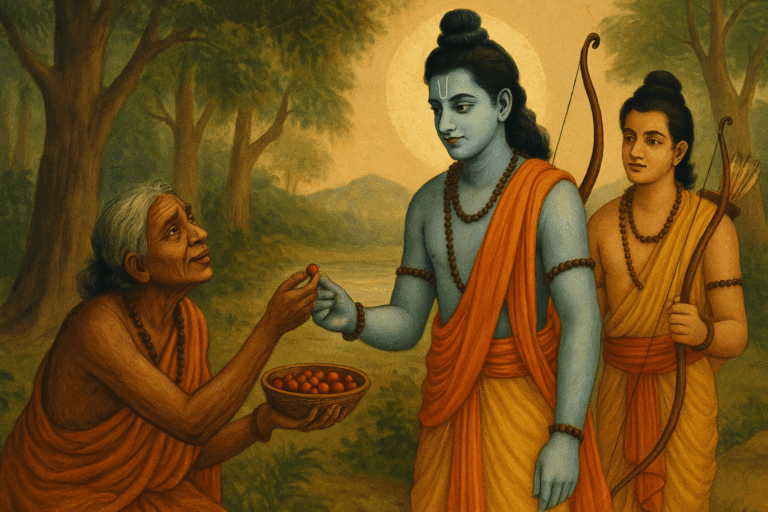When you hear the word “Hinduism,” what comes to mind? For many, it’s a religion—one among many in the world. But Hinduism is something far richer and more complex. It is a living culture, a sprawling civilization, woven together over thousands of years by traditions, stories, philosophies, rituals, and daily life practices. Calling it just a religion or even a sect does not capture its true nature.
The truth is, Hinduism is a way of life that has shaped the identity, art, society, and worldview of millions across South Asia and beyond. It’s a civilization that stretches far beyond temples and scriptures—into homes, festivals, languages, family customs, ethics, arts, and even governance.
A Name Rooted in Geography, Not Religion
To understand why Hinduism transcends the label of “religion,” we must look at its origins. The word “Hindu” comes from the Sanskrit word “Sindhu,” which referred to the Indus River. For centuries, “Hindu” simply meant the people who lived beyond this river—an identity tied to geography, not belief.
This geographic term gradually evolved as various communities, traditions, and philosophies developed in the Indian subcontinent. Unlike Christianity or Islam, Hinduism wasn’t founded by a single prophet or tied to one holy book. Instead, it grew organically, absorbing diverse ideas and customs into a shared cultural fabric. This fluidity is a hallmark of Hindu civilization.
Not a Sect, But a Civilization of Diversity
Sects generally have clear boundaries—a founder, a doctrine, and strict rules that members follow. Hinduism is different. It is more like a vast ocean with many currents, not a single river. It welcomes multiple beliefs, gods, philosophies, and paths.
For example, one Hindu may worship Shiva as the supreme god, while another may focus on Vishnu or Durga. Some follow intense devotional paths (bhakti), others pursue knowledge and meditation (jnana and dhyana), and still others emphasize duty and righteous action (karma). All of these are valid within Hinduism’s broad cultural framework.
This pluralism is why Hinduism has remained vibrant and resilient for millennia. Instead of enforcing uniformity, it embraces diversity. This openness lets it evolve with changing times and absorb influences without losing its core.
The Role of Epic Narratives in Shaping Culture
One way Hindu civilization expresses itself is through its epics—the Ramayana and the Mahabharata. These texts are not just religious scriptures but vast cultural repositories that have shaped Indian art, ethics, politics, and society.
Take the Ramayana: the story of Rama is deeply embedded in Indian consciousness. It teaches values like duty, honor, compassion, and justice. During festivals like Ram Navami or Dussehra, these stories are enacted in plays and dances across the country. The lessons aren’t confined to religion—they influence social behavior and cultural norms.
Similarly, the Mahabharata, with its complex characters and moral dilemmas, explores human nature and dharma in a way that resonates beyond religious boundaries. The Bhagavad Gita, part of the Mahabharata, offers philosophical insights that many interpret as a guide to living a balanced life.
These epics are cultural touchstones that unite people across regions, languages, and traditions, reinforcing Hinduism as a civilization rather than a sect.
Festivals as Cultural Celebrations
Hindu festivals beautifully illustrate how Hinduism is woven into culture. Diwali, the festival of lights, is celebrated by lighting lamps, exchanging sweets, and gathering with family. But it’s much more than a religious ritual; it is a cultural event that marks new beginnings, the victory of light over darkness, and community bonding.
Holi, the festival of colors, is another example. Its origins lie in mythology, but the festival itself transcends religious lines—it’s about joy, forgiveness, and togetherness. People from various backgrounds participate in these festivals, making them social and cultural phenomena as much as spiritual ones.
These festivals pass down values, stories, and social practices from one generation to the next, keeping the civilization alive and evolving.
Art, Architecture, and Language: Expressions of Civilization
Hinduism’s influence on art and architecture is profound. Temples like Khajuraho, Meenakshi in Madurai, and the Sun Temple in Konark are architectural masterpieces that narrate stories, celebrate divinity, and embody cosmological principles. These monuments are cultural landmarks that tell us about ancient society, technology, and artistic sensibility.
Classical dance forms such as Bharatanatyam, Kathak, and Odissi are rooted in Hindu mythology and temple culture. These dances are not only art but storytelling mediums, expressing spiritual themes through movement and music.
Even Indian classical music has deep ties to Hindu devotional practices. Ragas are said to evoke specific moods and times of day, creating a sensory experience that is both aesthetic and spiritual.
Language, too, is part of this cultural matrix. Sanskrit, the language of many Hindu texts, is considered the language of the gods. Its grammar and structure influenced many South Asian languages. The oral transmission of mantras, stories, and teachings kept the civilization’s core alive for centuries.
Social Ethics and the Idea of Dharma
At the heart of Hindu civilization is the concept of Dharma—often translated as duty, righteousness, or moral order. Dharma shapes personal behavior, social responsibilities, and even governance.
This isn’t about rigid rules but about living in harmony with one’s role in family, society, and the universe. It acknowledges the complexity of life and encourages ethical choices based on context and compassion.
Karma, the principle of cause and effect, complements dharma by teaching accountability for actions, encouraging people to act with awareness.
Together, these ideas underpin social ethics in Hindu culture, influencing how communities interact, how justice is understood, and how spiritual growth is pursued.
Family and Community: Living Hindu Culture
Family life is central to Hindu culture. From birth rituals like Jatakarma and Namkaran to marriage ceremonies (Vivah) and death rites (Antyeshti), Hindu practices mark every stage of life with cultural and spiritual significance.
These rituals are more than religious observances—they are social events that reinforce family bonds, community ties, and shared values. They teach respect for elders, care for children, and the importance of social harmony.
Communities often organize around temples, schools, and festivals, creating social networks that nurture cultural continuity. In diasporas around the world, these practices help preserve identity and connect generations.
Hinduism and Adaptability
One reason Hindu civilization has endured is its adaptability. It has absorbed and integrated influences—from Buddhist and Jain philosophies to Islamic and Christian interactions—while maintaining its core values.
In the modern world, Hinduism continues to evolve, blending ancient wisdom with contemporary lifestyles. Yoga and Ayurveda, once purely spiritual or medicinal, are now global practices embraced for wellness.
This adaptability shows Hinduism’s strength as a living culture, not a static sect locked in the past.
Some Real-Life Examples
- In Varanasi, one of the world’s oldest continuously inhabited cities, life itself is intertwined with Hindu traditions—ritual baths in the Ganges, daily aartis, festivals, and countless temples create a vibrant civilization rather than just religious practice.
- The Khajuraho Group of Monuments shows how spirituality, art, and architecture merged into a living culture that celebrated life, love, and the cosmos.
- The tradition of classical Indian dance passed from temple dancers to modern stages reflects the transmission of cultural knowledge beyond religion, into art and identity.
Why This Matters Today
Seeing Hinduism as a culture and civilization helps move beyond simplistic labels that can cause misunderstanding or division. It allows us to appreciate its rich tapestry of stories, practices, and philosophies as part of a living heritage that informs millions of lives every day.
Whether it’s the way families celebrate festivals, the philosophical debates around dharma and karma, or the global spread of yoga and Ayurveda, Hinduism’s influence is broad and deep. It’s a civilization that has grown over millennia and continues to thrive, because it embraces diversity, change, and complexity.
Understanding Hinduism this way opens doors for meaningful dialogue, cultural respect, and a deeper connection to one of the world’s oldest and richest civilizations.







